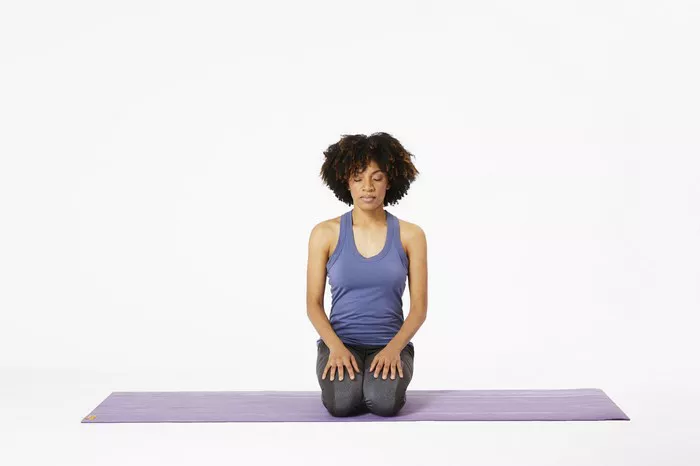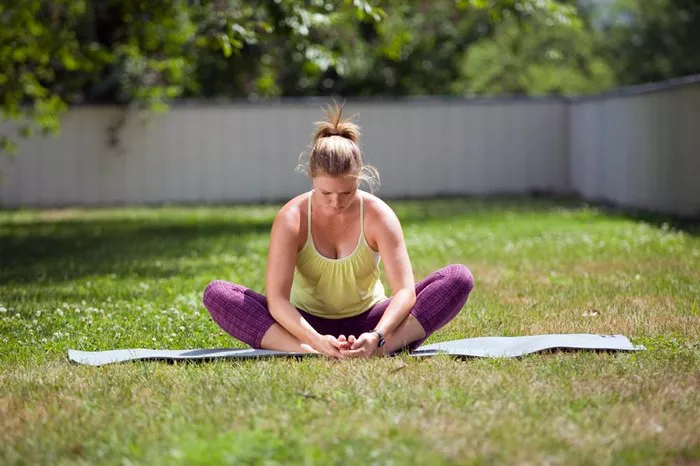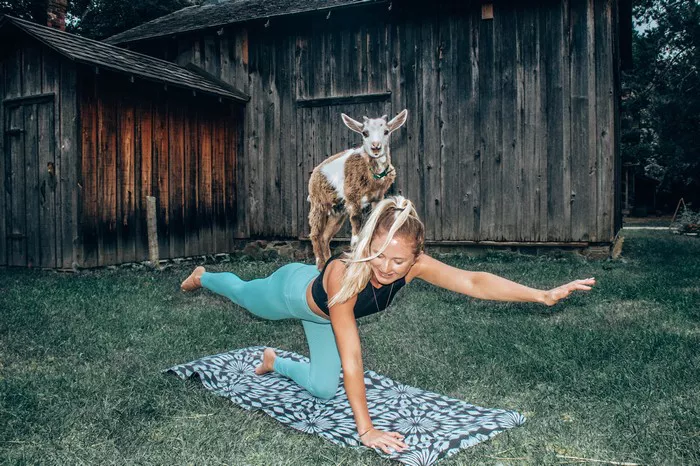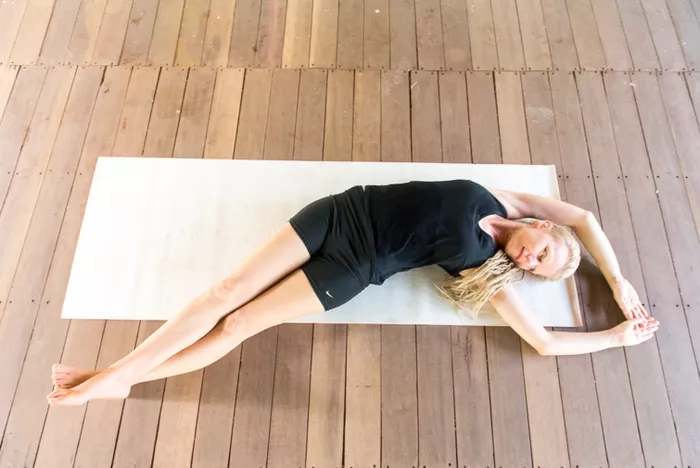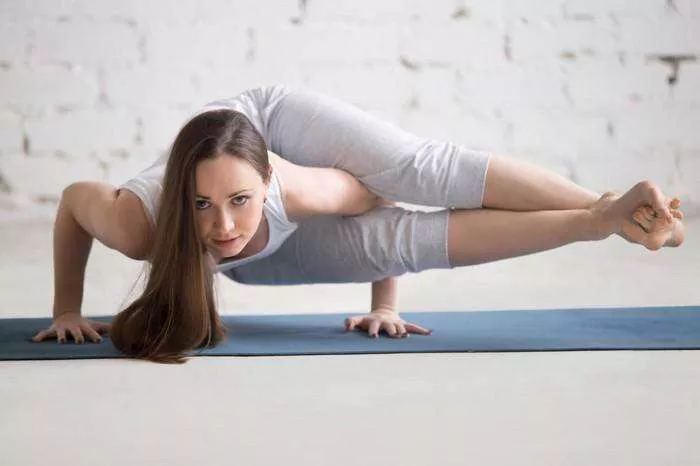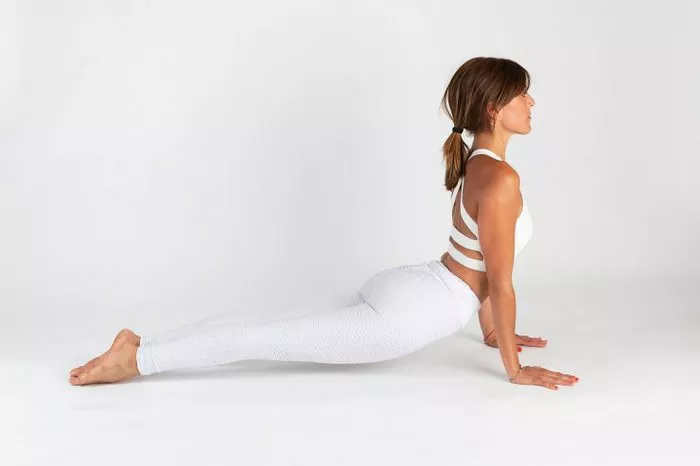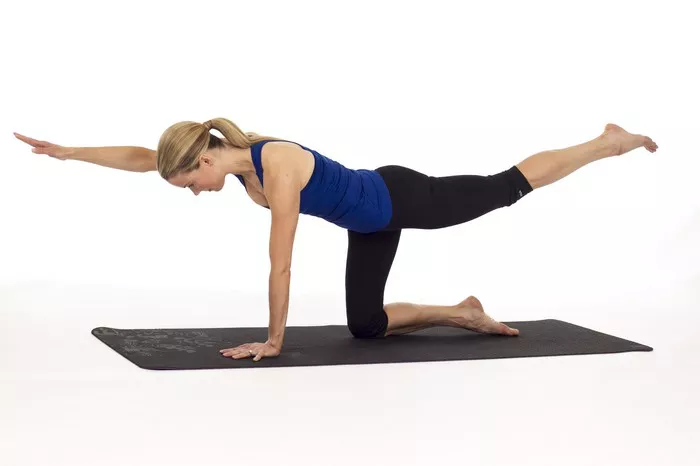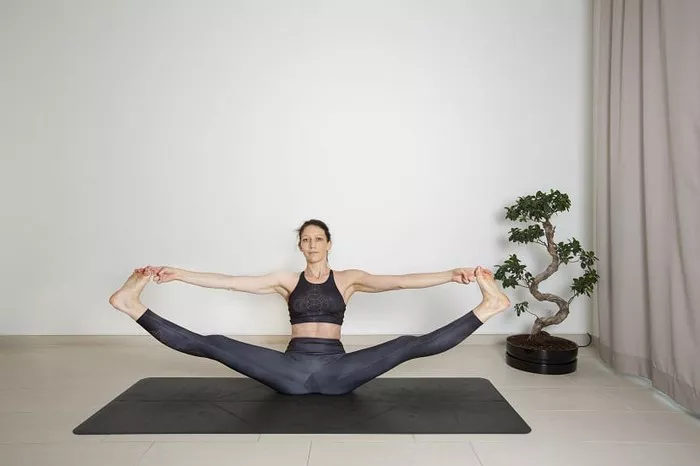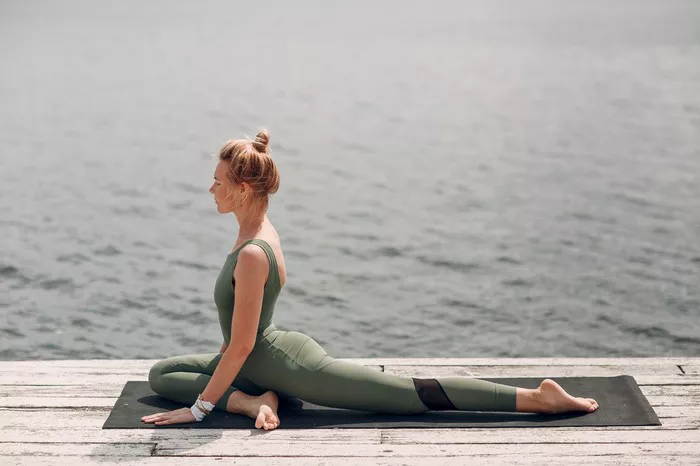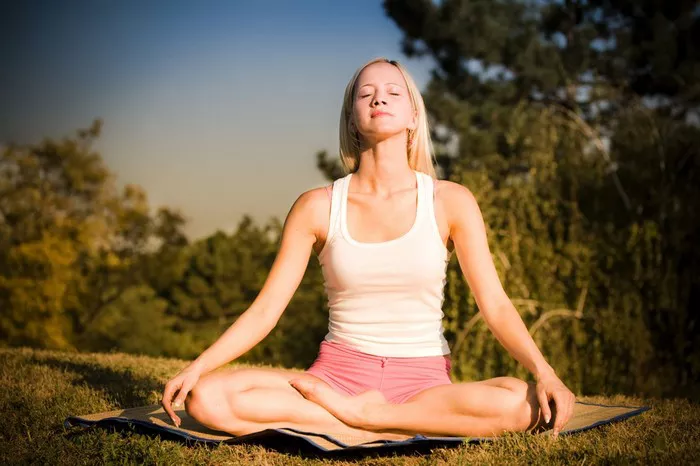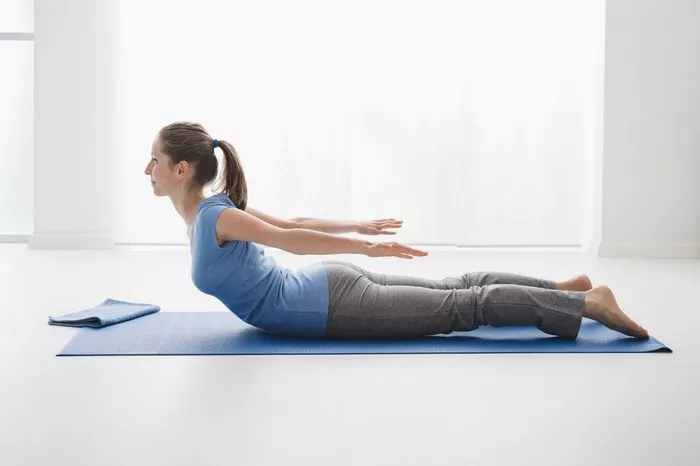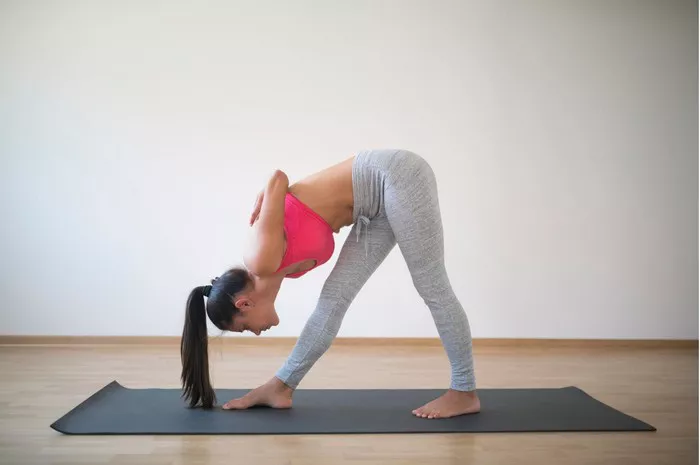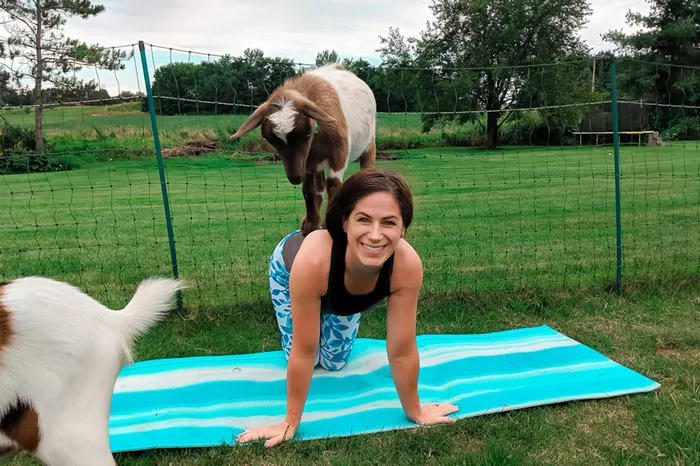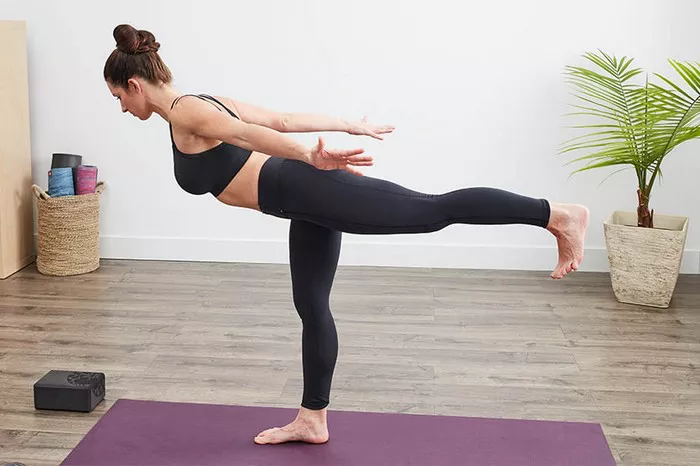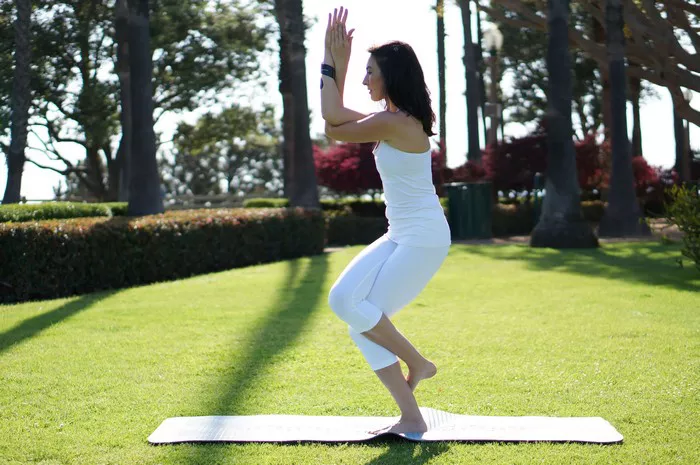The Easy Pose, known as Sukhasana in Sanskrit, is one of the most foundational seated postures in yoga. It is often used for meditation and breathing exercises (pranayama) due to its comfort and simplicity. Despite its name, the Easy Pose can require effort for beginners who are not accustomed to sitting cross-legged for extended periods. The name “Sukhasana” derives from the Sanskrit words “Sukha,” meaning ease or comfort, and “Asana,” meaning pose or posture. This pose promotes a sense of calm, groundedness, and physical stillness, serving as a gateway into more complex yoga practices.
How to Perform Easy Pose Correctly
Practicing Sukhasana with the correct alignment is essential to gain its full benefits and avoid strain. Follow these steps:
- Choose a Comfortable Surface: Sit on a yoga mat or folded blanket to elevate the hips above the knees. This helps maintain spinal alignment.
- Cross the Legs: Sit down with your legs extended. Cross your shins and tuck each foot beneath the opposite knee.
- Spine and Head Alignment: Sit upright with your spine long and shoulders relaxed. The head should be in line with the spine, and the chin should be slightly tucked.
- Rest the Hands: Place your hands on your knees or thighs with the palms facing up or down, depending on your intention (palms up for receiving energy, palms down for grounding).
- Breathing: Close your eyes and focus on your breath. Inhale deeply through the nose and exhale slowly.
This posture may be held for several minutes, depending on your level of comfort and experience. Using props such as blocks or cushions under the knees can alleviate discomfort in the hips or knees.
Physical Benefits of Easy Pose
The Easy Pose offers a variety of physical benefits that contribute to overall bodily health and posture. Although it appears simple, holding the posture with proper alignment engages various muscle groups and encourages relaxation.
- Improves Posture: Sitting upright strengthens the muscles along the spine, shoulders, and lower back.
- Opens the Hips: Sukhasana gently stretches the hips, groin, and knees, increasing flexibility over time.
- Supports Joint Health: By rotating the legs outward and placing minimal strain on the knees, it supports joint mobility.
- Enhances Circulation: The cross-legged position can improve blood circulation, especially in the lower limbs.
- Reduces Muscular Tension: The gentle engagement and release of various muscle groups help relieve built-up tension.
Regular practice can condition the body to sit comfortably for extended periods, enhancing other seated yoga postures and meditative practices.
Mental and Emotional Benefits
Beyond physical advantages, Sukhasana is revered for its calming effects on the mind. It fosters mental clarity, emotional stability, and inner peace.
- Encourages Mindfulness: Easy Pose is often the first position used for mindfulness and meditation practices.
- Reduces Stress: Deep breathing and physical stillness promote relaxation and help reduce cortisol levels.
- Improves Concentration: The steady and balanced posture helps focus the mind, making it easier to concentrate.
- Emotional Balance: The grounding nature of the pose encourages feelings of safety, stability, and calm.
- Promotes Inner Awareness: By turning the focus inward, Sukhasana enhances self-awareness and introspection.
Incorporating Easy Pose into a daily routine can be a powerful tool for managing stress, anxiety, and emotional unrest.
Variations of Easy Pose
Sukhasana can be modified in several ways to suit practitioners of different body types, flexibility levels, and experience.
- Supported Sukhasana: Sitting on a block or cushion to elevate the hips makes the pose more accessible for those with tight hips.
- Knee Support: Placing folded blankets or yoga blocks under the knees reduces strain and increases comfort.
- Wall Support: Practicing against a wall provides additional spinal support and helps maintain posture.
- Bound Angle Pose (Baddha Konasana): A related seated pose that opens the hips even more by pressing the soles of the feet together and letting the knees fall open.
- Lotus Progression: For more advanced practitioners, Sukhasana can serve as a preparatory pose for Lotus Pose (Padmasana).
Always listen to your body and choose the variation that provides both comfort and the intended physical and mental benefits.
When and Where to Practice Sukhasana
Easy Pose can be practiced virtually anywhere and at any time, though certain conditions may enhance the experience.
Ideal Times to Practice:
- Morning: Sets a calm and intentional tone for the day.
- Before Bed: Helps transition into a restful state by calming the nervous system.
- Before Meditation or Breathwork: Provides a stable base for deeper internal practices.
Suitable Locations:
- Yoga Studio: Under the guidance of an instructor.
- Home Practice Area: A quiet and clean space dedicated to yoga.
- Outdoors: In nature to connect with grounding energy and fresh air.
Choosing a serene environment supports the meditative qualities of the pose, enhancing its calming effects.
Common Mistakes and How to Avoid Them
While Easy Pose may look effortless, several common errors can hinder its benefits or cause discomfort.
- Rounding the Back: Keep the spine tall. Slouching can strain the lower back and reduce the pose’s effectiveness.
- Tight Hips or Knees: Don’t force the legs into position. Use props to ensure comfort.
- Shoulder Tension: Let the shoulders relax down and away from the ears.
- Holding the Breath: Maintain steady, relaxed breathing to support mental clarity and physical relaxation.
- Sitting on the Floor: For beginners, sitting directly on the floor may be too intense. Elevating the hips makes the posture more accessible.
Being mindful of these pitfalls helps practitioners enjoy a safe and effective experience with Sukhasana.
How to Incorporate Easy Pose into a Yoga Routine
Easy Pose is a versatile posture that can be seamlessly integrated into various stages of a yoga practice.
- As a Warm-Up: Start your session with Sukhasana to center yourself and tune into your breath.
- For Meditation: Use this pose during mindfulness or meditation segments for enhanced focus and stillness.
- During Pranayama: Provides a stable foundation for breathing exercises.
- In Cool-Down: After more active poses, Sukhasana helps transition the body and mind into relaxation.
- As a Standalone Practice: Even just sitting in Sukhasana for 10-15 minutes daily can offer substantial benefits.
Whether as a starting point or a concluding posture, Easy Pose supports the flow and intention of a complete yoga routine.
The Philosophy Behind Sukhasana
Sukhasana isn’t just a physical posture; it carries deep philosophical meaning within the yogic tradition. Its simplicity embodies the principle of finding comfort and stillness in the present moment.
According to yogic philosophy, physical stillness is a mirror for mental stillness. Sitting in Sukhasana invites practitioners to become fully present, letting go of external distractions and internal chatter. The posture also reflects the yogic idea of “sthira sukham asanam,” from Patanjali’s Yoga Sutras, meaning a pose should be both steady (sthira) and comfortable (sukha).
In this way, Sukhasana becomes a practice of inner exploration, teaching patience, mindfulness, and acceptance.
Conclusion
The Easy Pose, or Sukhasana, is far more than just a seated position. It offers a multitude of physical, mental, and emotional benefits that make it an essential component of both beginner and advanced yoga practices. Its accessibility and simplicity belie its profound potential to cultivate inner stillness, clarity, and balance. By practicing Sukhasana with proper alignment and intention, one can experience not only physical ease but also a deeper connection with oneself.
FAQs
1. Is Sukhasana suitable for beginners?
Yes, Sukhasana is beginner-friendly. However, it may still require support such as cushions or props for those with tight hips or knees.
2. How long should I sit in Easy Pose?
Start with 5-10 minutes and gradually increase the duration as your comfort and flexibility improve.
3. Can Sukhasana cause any discomfort?
Improper alignment or lack of support can lead to discomfort in the knees, hips, or lower back. Using props and adjusting posture can prevent this.
4. What if I can’t cross my legs comfortably?
Try using a yoga block or cushion to elevate the hips and reduce pressure on the knees. There are also chair-based alternatives for seated meditation.
5. How is Sukhasana different from Padmasana (Lotus Pose)?
Sukhasana is easier and more accessible, involving a simple cross-legged position. Padmasana requires placing each foot on the opposite thigh, which demands greater flexibility and joint openness.
6. Can children practice Sukhasana?
Yes, children can benefit from Sukhasana, especially in helping to improve concentration and relaxation. Supervision and guidance are recommended.
7. Is it okay to practice Sukhasana every day?
Absolutely. Daily practice can improve flexibility, posture, and mental focus over time.
8. What should I wear while practicing Easy Pose?
Wear comfortable, non-restrictive clothing that allows free movement of the hips and legs.
9. Does Sukhasana have spiritual benefits?
Yes, it is commonly used in meditation and spiritual practices to foster inner awareness, mental clarity, and a sense of peace.
10. Can I use Sukhasana for breathing exercises?
Yes, it is an ideal posture for pranayama, offering stability and comfort that supports deep, controlled breathing.
Related Topics:

